Thinking on a field controlled remotely
Thinking on a field controlled remotely
Nowadays we count on dozens of disruptive technologies which greatly facilitate the work in agriculture. For example, we have drones that facilitate the analysis of the harvests, sensors that allow us to know the adequate irrigation, control fleets that check the state of our tractors in real-time. In addition, we are experiencing a rough pandemic since two years ago, where more and more people tend to work remotely. My reflection is: having more technologies and information than ever and the tendency of working remotely in most jobs, will the farmers work with a higher balance between land and office tasks? Technology will allow a farmer to control its crops from thousand of kilometres ago the land?
I consider myself a farmer since I was born, my family has been dedicated to the cultivation of the olive tree for generations, always with the passion to achieve the best quality of olive oil. Nevertheless, I never considered being a full-time farmer as my first option, in fact, I have studied Telecommunications Engineering and have a Master’s Degree in Big Data. My job is related to agriculture but from the point of view of promoting and boosting digitalisation in Andalusia, giving support to the Regional Ministry. Both my educational training and my job help me to have a broader vision of the needs of the olive oil farmers and the improvements that I would like to include in the family land.
Working the land remotely
The generational gap is a fact in agriculture, we have spoken about it several times in the SmartAgriHubs project, and I can corroborate it in my family. Although I work with technologies, my father is not really open to including them in daily work. Of course, machinery has been implemented to facilitate daily labour and harvest, but the management of data is far from his thoughts.
Ideally, I would like to see my father and other farmers (up to 50 years all in most cases) testing and managing lands with solutions available. For example, now it is possible to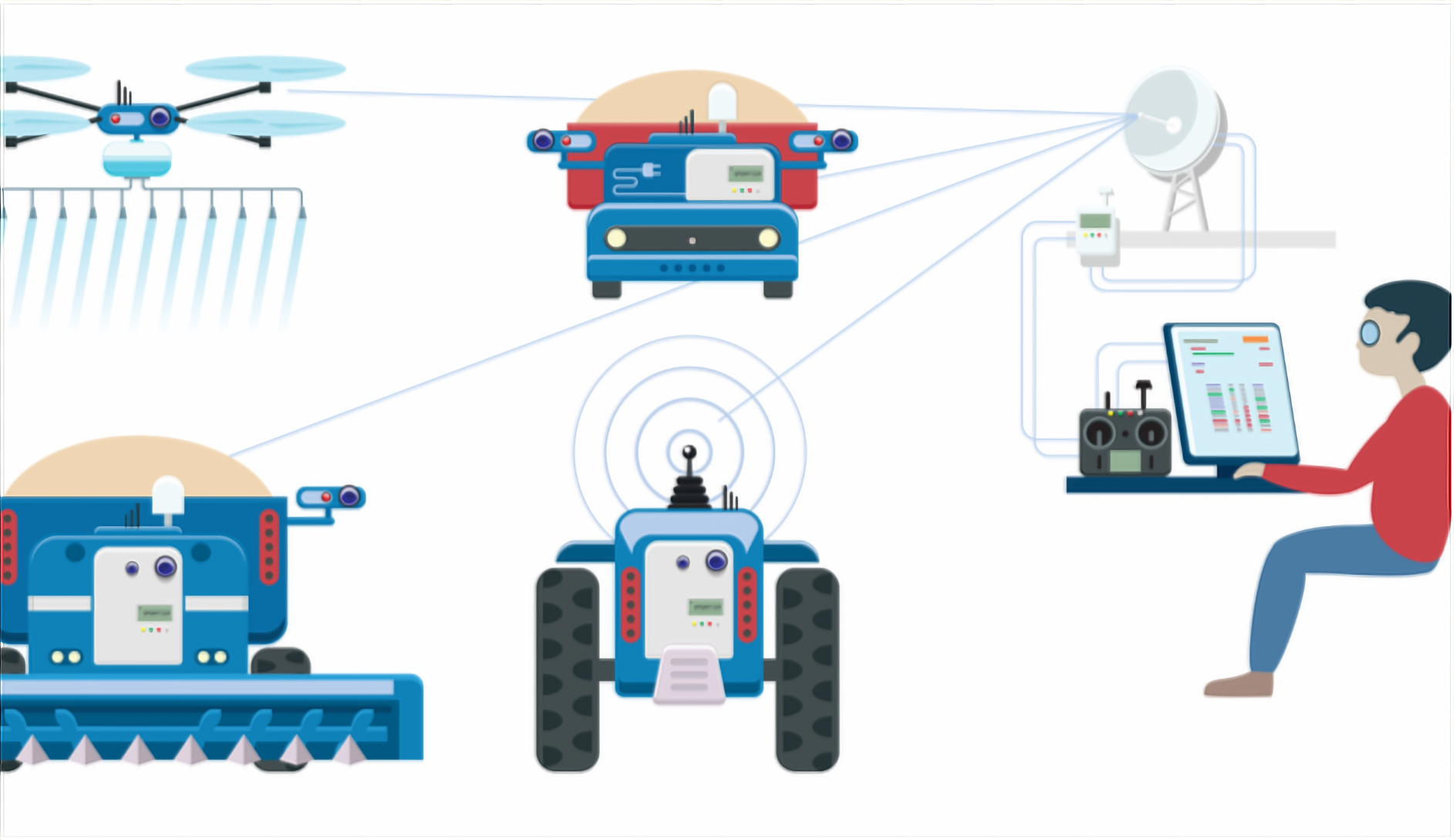 manage tractors from an office, using automatic guided vehicles by GPS and remote sensors. Certainly, most of the Andalusian lands dedicated to the olive trees are not always a “perfect land” for remote driving: steep grounds, streams, trees without the same distance among them and so on… but research and innovation continue to find solutions in the near future; for example, the H2020 project NIVA, in which the Regional Ministry of Agriculture, Livestock, Fisheries and Sustainable Development of Andalusia participates, has developed a user case to catalogue different elements of the land by satellite images.
manage tractors from an office, using automatic guided vehicles by GPS and remote sensors. Certainly, most of the Andalusian lands dedicated to the olive trees are not always a “perfect land” for remote driving: steep grounds, streams, trees without the same distance among them and so on… but research and innovation continue to find solutions in the near future; for example, the H2020 project NIVA, in which the Regional Ministry of Agriculture, Livestock, Fisheries and Sustainable Development of Andalusia participates, has developed a user case to catalogue different elements of the land by satellite images.
Another solution that is near to come for the olive oil sector, comes from the orange sector, as prototypes of robots for harvesting have been already defined and tested. These prototypes allow the harvest of oranges according to an exact calibre previously defined, avoiding manual check of the orange size.
Observing crops remotely
Advancing our aim of working remotely on the land, the next step is to control it remotely through remote systems. Starting in 2015, the European Space Agency launched the Sentinel 2-A and 2-B satellites, in order to perform remote observation of the earth from space. Both satellites are especially interesting for agriculture since they are equipped with sensors that contain 13 multispectral bands. When combining them, satellites and multispectral bands, we can obtain information about the vigorousness of the plant, water stress, climate information, vegetable mass, etc.
Going some kilometres below, drones and unmanned aerial vehicles (mostly known as UAVs) 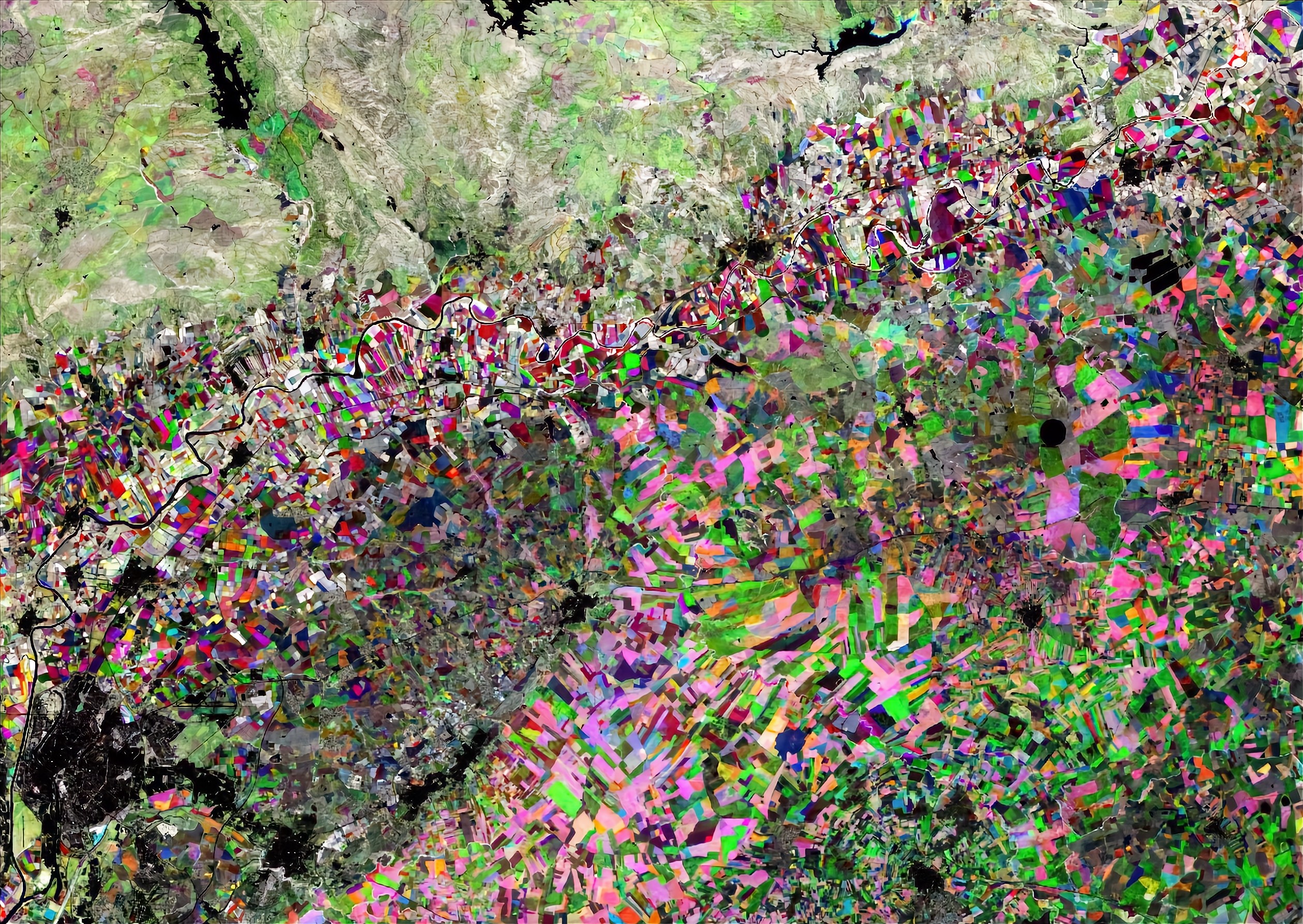 are enabling to get precise and low-cost information about farms. Previously, to contract the service of a plane was absolutely necessary to observe lands from the air but nowadays, drones have democratised the access to observation from the air. As an example, a UAV that integrates a multispectral camera obtains information about the vegetative index of each stem with a centimetre resolution, providing useful data for decision-making processes such as plague control or maturity level, among others.
are enabling to get precise and low-cost information about farms. Previously, to contract the service of a plane was absolutely necessary to observe lands from the air but nowadays, drones have democratised the access to observation from the air. As an example, a UAV that integrates a multispectral camera obtains information about the vegetative index of each stem with a centimetre resolution, providing useful data for decision-making processes such as plague control or maturity level, among others.
Drones also allow to carry out observation and surveillance from the air, helping the grazing and agriculture labours, such as rescue work of lost animals or accidents and also curating plants that need to be fumigated, in this case, drones are equipped with a tank. Consequently, drones and UAV services allow farmers to save products.
The power of a good connectivity
All these types of technologies have many advantages, but we cannot forget that most of our farmers live in rural areas where communications are not usually the fastest ones. On the one hand, 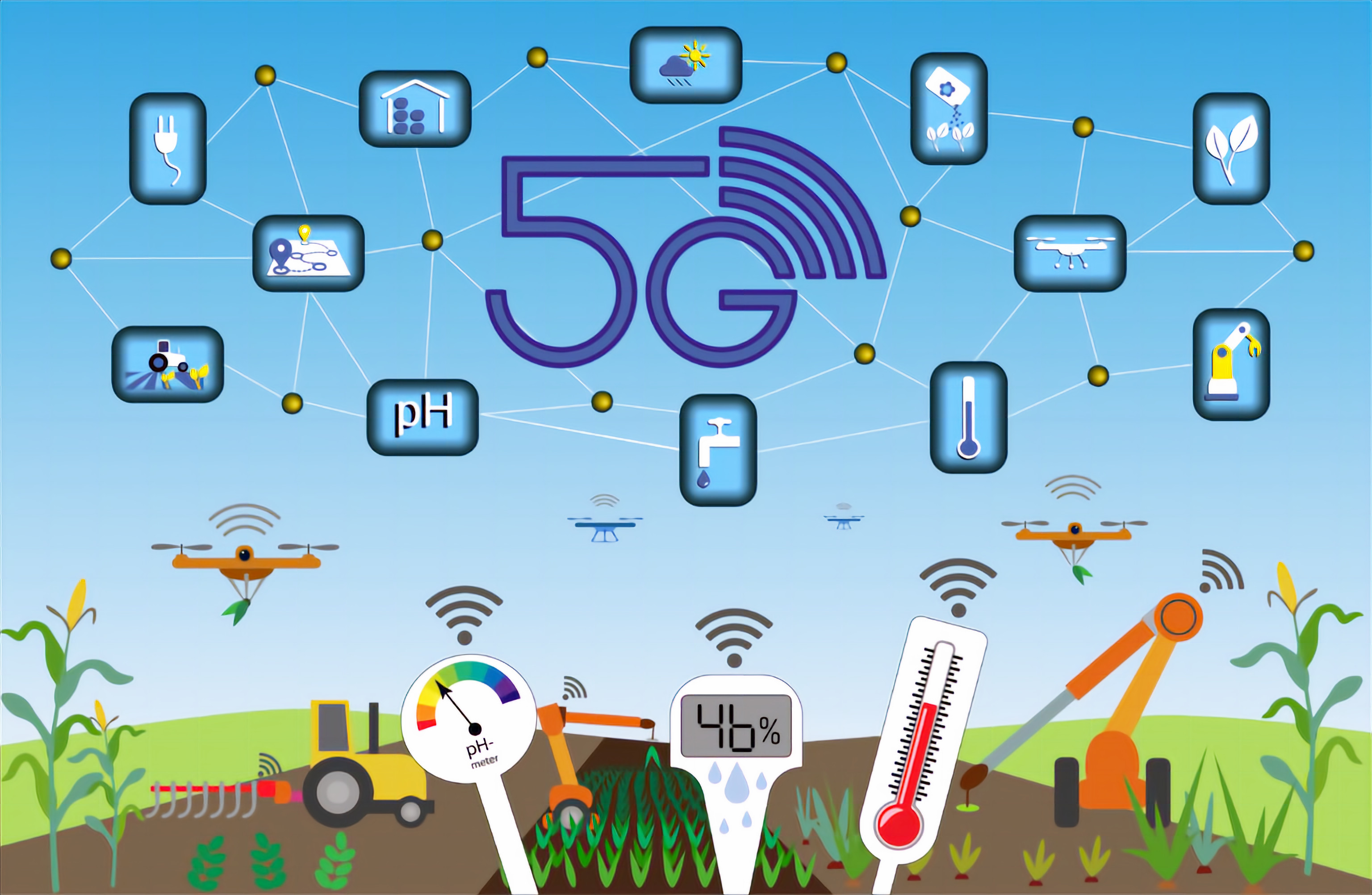 some sensors do not need a large bandwidth such as a humidity sensor or a weather station, but on the other hand, solutions like automatic vehicle guidance, drones, image processing, etc. will need to be supported by technology like 5G that will allow having a minimum delay in communications, in addition to a broad bandwidth never seen before in the use of technologies.
some sensors do not need a large bandwidth such as a humidity sensor or a weather station, but on the other hand, solutions like automatic vehicle guidance, drones, image processing, etc. will need to be supported by technology like 5G that will allow having a minimum delay in communications, in addition to a broad bandwidth never seen before in the use of technologies.
Even though it seems such an incredible thing, the 5G technology already enables uses that were unimaginable just a few years ago. An example is that drones already can analyze crops in real-time through multispectral images, send these images to a nearby server and make decisions timely about the dose to apply. Therefore, to continue empowering rural areas by providing them with good bandwidth is key for the development of agriculture in the future.
Becoming a new farmer
I never would have imagined that my father could use a smartphone to manage some items of our farm, such as the logistics, crop yields or the vegetative index of olive groves. Just a few years ago, he used to manage all these data on paper, so a substantial change has occurred in recent years. Maybe not my father and the similar generation of farmers will integrate current solutions on farms, but my thought is: will the next generation of farmers be prepared and widely opened to digitise farms and empower the decision-making process through data? Most of the new farmers become by the retirement of their parents, will the new generation prepare and be informed not only about the traditional management of farms but also the new management systems through data-driven? Are policymakers boosting initiatives to ensure that generational change will bring also technology-motivated new farmers? And finally, when my brother and I become (at least) part-time farmers once my father gets retired, will we manage our olives from our house, office or as digital nomads?
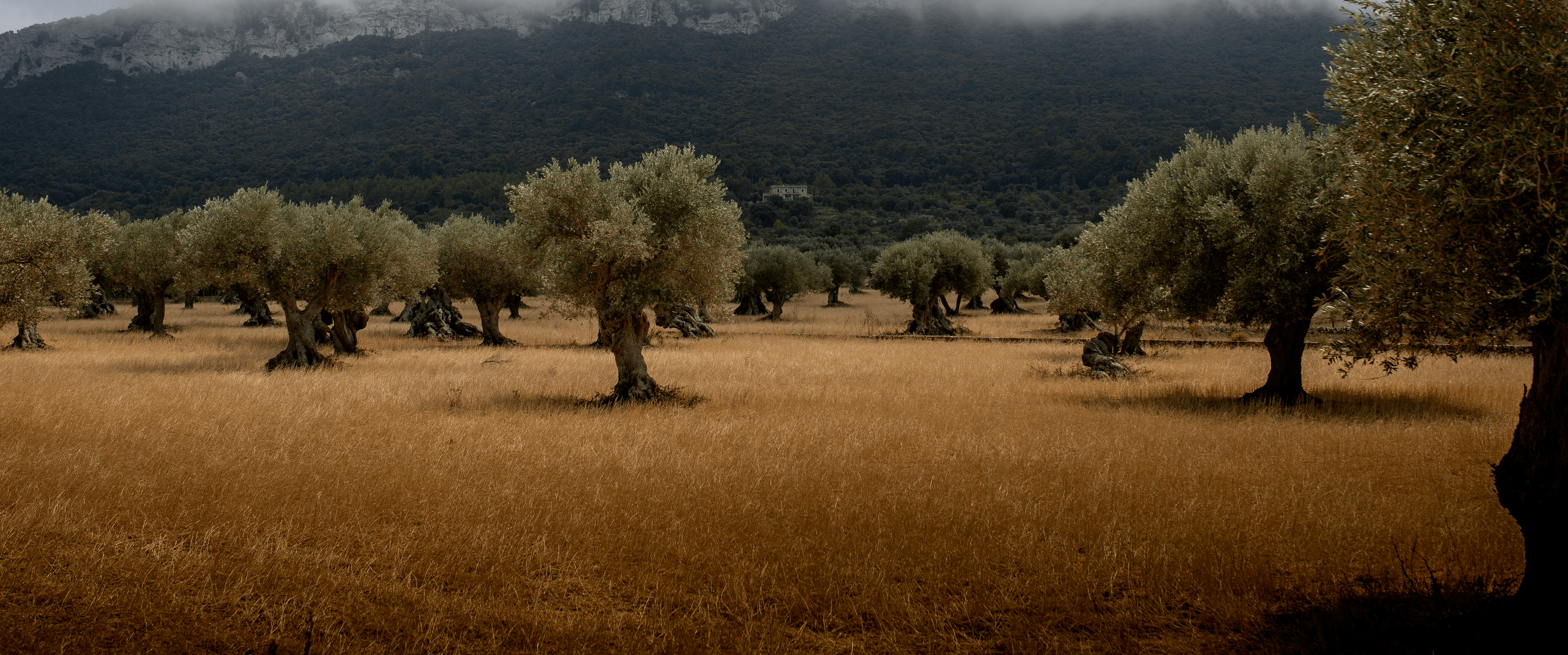
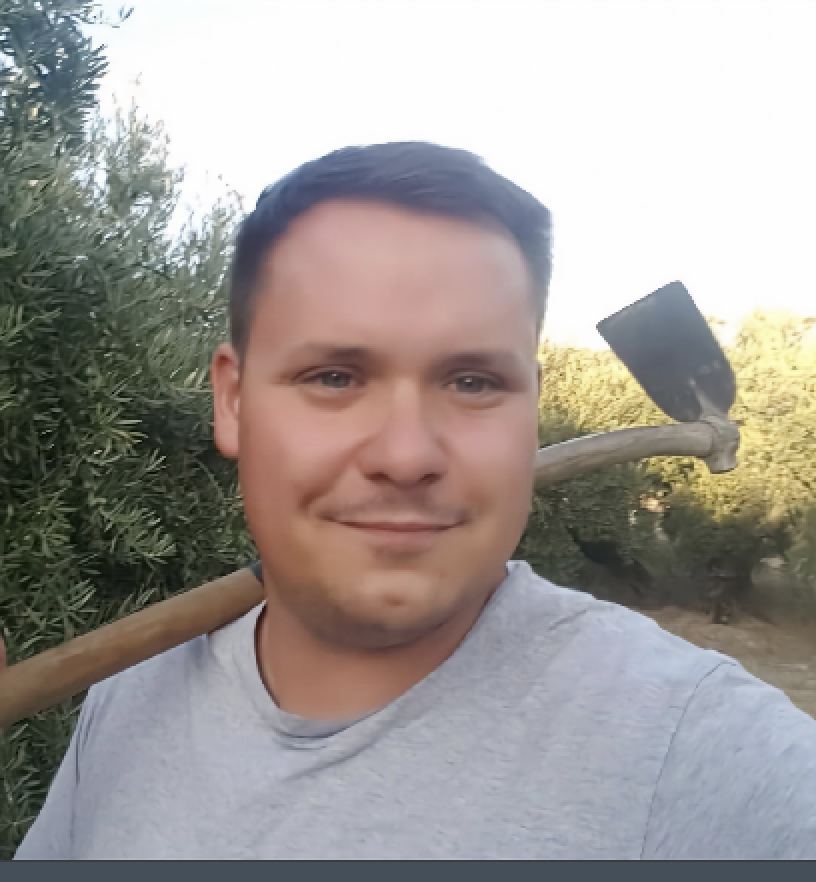 Agustín Serrano Jiménez, Agritech Project Manager
Agustín Serrano Jiménez, Agritech Project Manager
